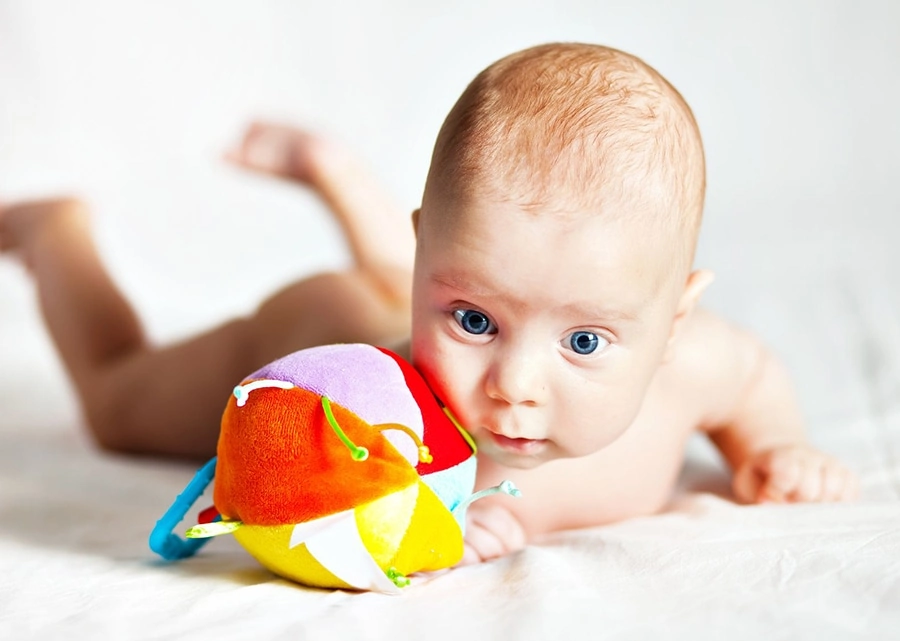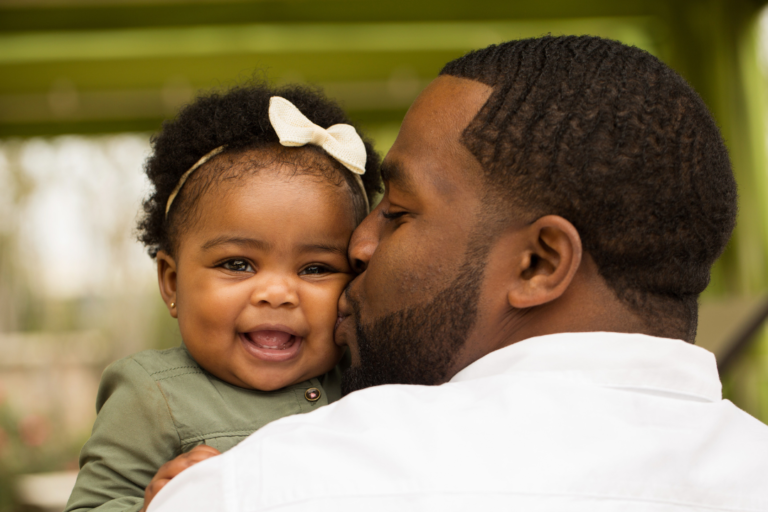Gross motor development relates to the functioning and development of the large muscles in the arms, legs and torso. We use these muscles as part of basic mobility such as walking, running, throwing, lifting, kicking, etc.
The first three years of life are considered the most important years for the development of young children. This is the time when your baby will develop rapidly, going from a helpless newborn who’s movements are governed by reflexes to an interactive toddler who is exploring and mastering their world through active play and physicality.
Let’s look at each of the stages of gross motor development:
At birth your baby is curled up and unable to work and move against gravity. Over the next eighteen months, your baby will master gravity and gain control over their body as they engage with the world. Most gross motor development is pretty hard wired and the milestones are clear for all to see. But there are certain activities that you should be doing in the first two years of life that can enhance the development of motor skills.
Rolling
After being curled up in utero, your baby will spend the first three months of life strengthening their tummy and back muscles. By 4 months, if these muscles are strong enough, your baby will start to roll – first tummy to back then back to tummy.
Since the first step towards rolling is to build the strength of the back muscles. Place your baby on the floor on their tummy often in the first few months.
As they get older, ensure your baby has loads of floor time to activate both the flexor and extensor muscles. Put toys just out of reach, near their head so that they have to roll to get them if they are on their back or lift their chest if they are on their tummy.
Sitting
Sitting is actually the most ‘straight forward’ of the milestones as it just requires good head control and adequate muscle tone – no co-ordination is really needed. Almost all babies sit unsupported by 6 to 7 months.
Make sure your baby has load of opportunities to sit supported as they approach 6 months. Challenge them a little by removing some support. Hold the back of their clothes gently to support them in sitting as they learn to get it right.
Crawling
Babies typically crawl between 7 and 10 months. They might start with a bear crawl or shuffling around on their bums but crawling should culminate with coordinated reciprocal movements of the arms and legs. However, it has to be said that some babies don’t crawl at all. But crawling is the ideal because it allows your baby to experience moving “in and out” and “over and under” things – which is vital for establishing spatial awareness. Crawling also works the shoulders and hands in a way that is hugely beneficial for fine motor tasks later.
The foundations for crawling are laid down in tummy time, so the principle again is loads of time on the floor. If your little one isn’t crawling at around 9 months, help them by supporting them in the four-point position. You can also place your hands behind their feet so they have a boundary to push off from, if their tummy muscles aren’t strong enough to keep their knees under their hips. Putting toys just out of reach should trigger the interest to get them.
Walking
Walking is a very variable milestone – it emerges between 10 and 14 months in most babies. Some babies walk as early as 9 months and others, as late as 18 months.
Cruising (holding onto furniture to walk) precedes walking and is the best way to prepare your baby to walk.
Jumping
There is nothing cuter than a toddler trying to jump. It’s a difficult milestone and most toddlers only jump with two feet off the floor closer to three years old. Offer lots of encouragement and praise while your little one practices getting their jump right.
Tools that hamper gross motor development
Although some baby paraphernalia is useful, it can be over used to the point of hampering gross motor development. With the exception of the short periods when these items are essential, such as in travel or when feeding, limit the use of gear that restricts movement and exploration. These include:
- Infant lounger pillows
- Baby bouncy seats
- Car seats
- Bumbo Seats
- Jolly Jumpers
- Walking rings
Rather use play and fun activities to encourage gross motor development in your little one. Remember to record your little one’s milestones on Parent Sense and get daily play activities to optimise your baby’s development straight from the app.




